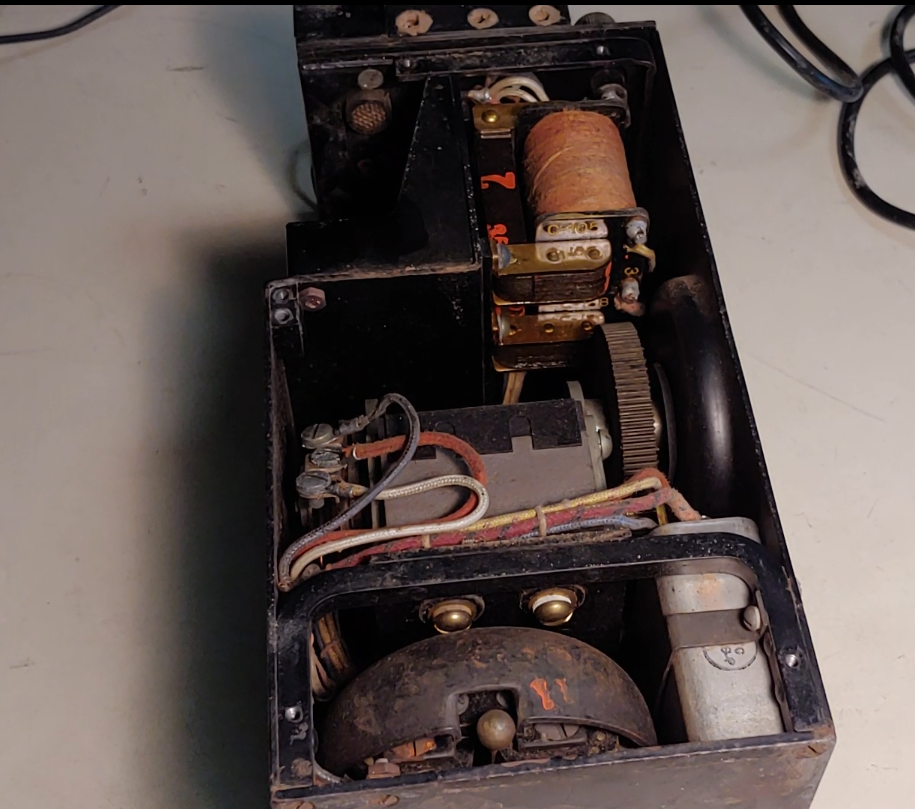EE-8 B Military Field Phone
The EE-8 Field Telephone was used by the Signal Corps from before World War II through the Vietnam War. It was housed in leather, then canvas, and its last production had a nylon case and straps, after the changeover to that material in 1967.
The EE-8 Field Telephone was standardized in 1932 and procurement began in 1937, providing a lighter and more functional unit just in time for the huge mobilization of the U.S. military for WW II. Among other improvements, the EE-8 increased the maximum transmission range of the predecessor EE-5 Field Telephone by six miles or more.
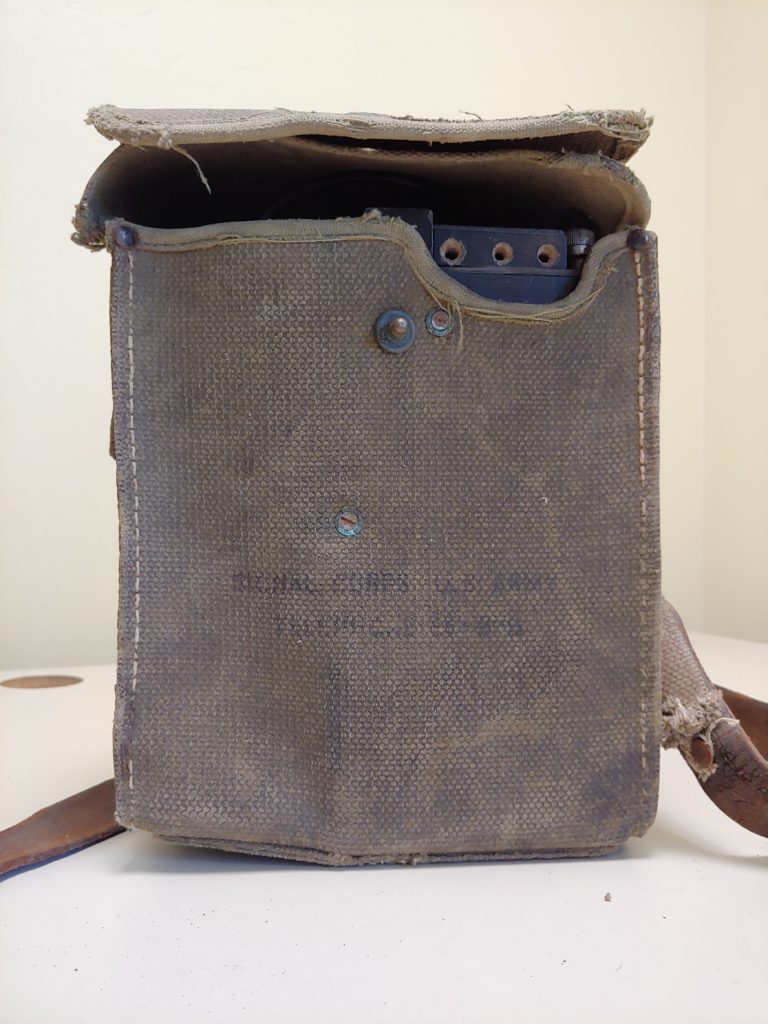
The U.S. Army Field Telephones EE-8, EE-8A, and EE-8B is a portable field telephone desgned for use on either local or common battery telephone systems. The talking and signaling range varies with the type of wire used, the condition of the wire (dry, wet, frayed) and whether the wire is on the ground or in the air. As a local battery telephone, a talking range of 11 to 17 miles is typical, suitable for Corps area usage.
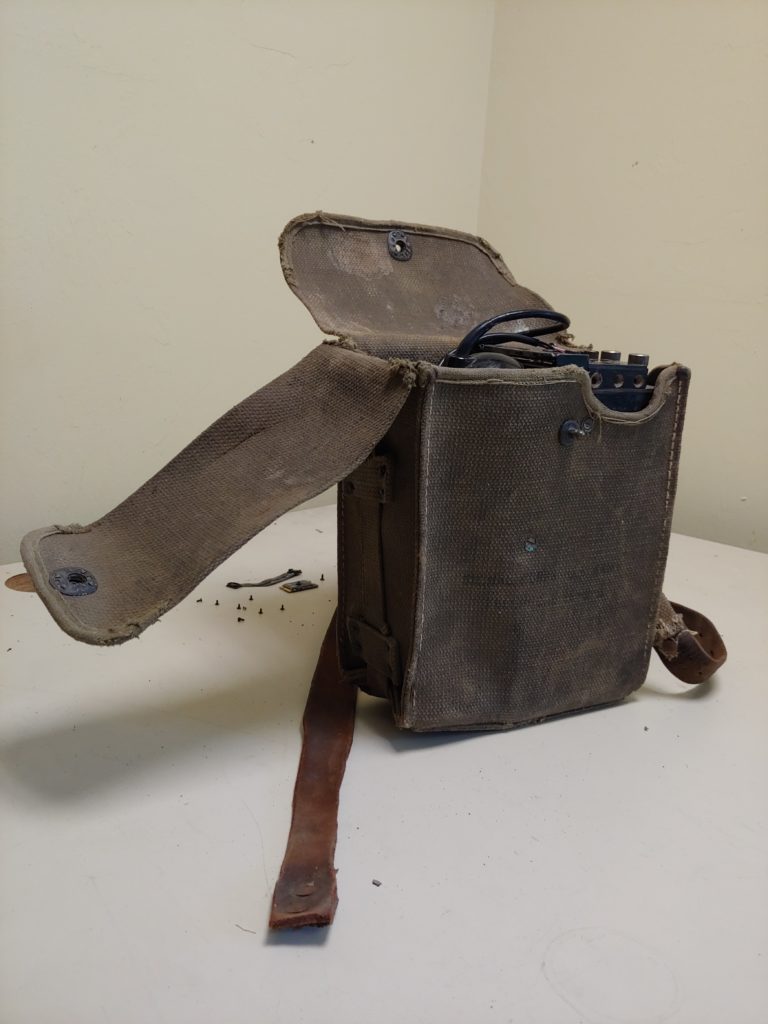
The phones are contained in a case approximately 9.5 x 7.75 x 3.5 inches weighing about 9.75 pounds including battery. The EE-8-A and -B are a little larger than the EE-8. The main difference between the EE-8 and the other models is that a section of the case lid has been cut out and replaced by flexible material to enable the handset to be hung on the case in a position to hold down the lever switch.
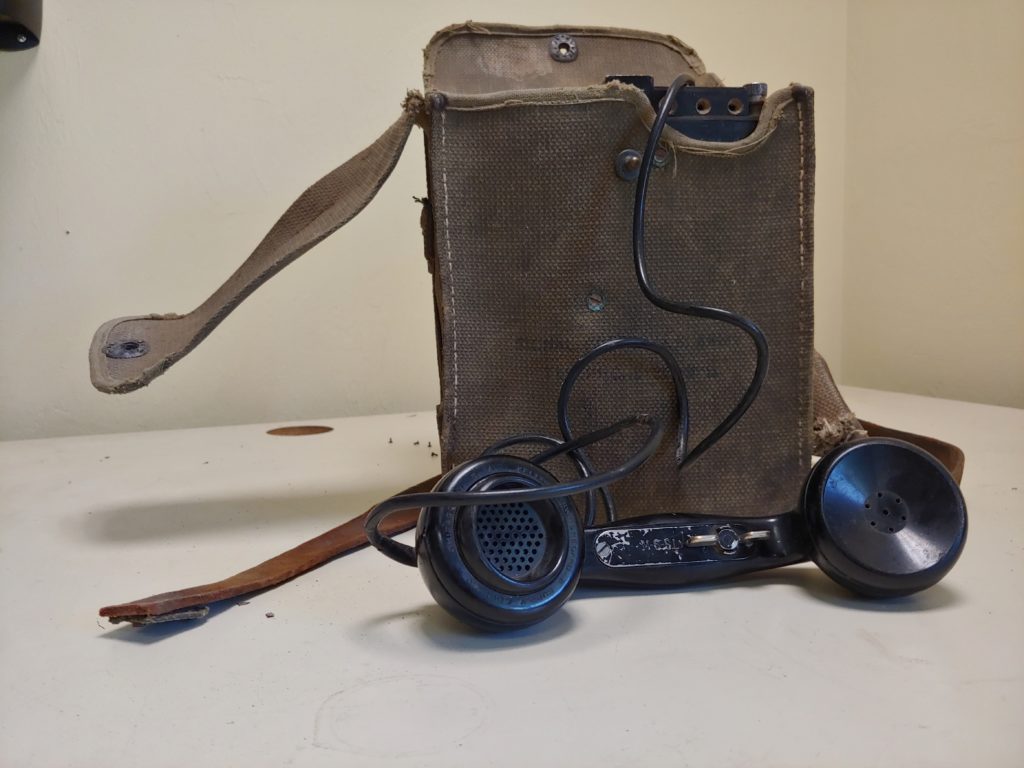
At the start of World War II, the EE-8 in a leather case wiih a leather strap was standard issue. However, experience in the Pacific showed right away that leather did not hold up and the EE-8 leather case was replaced by an olive drab canvas case with web strap. The EE-8 and EE-8A utilize an aluminum chassis while the EE-8B chassis is sheet steel.
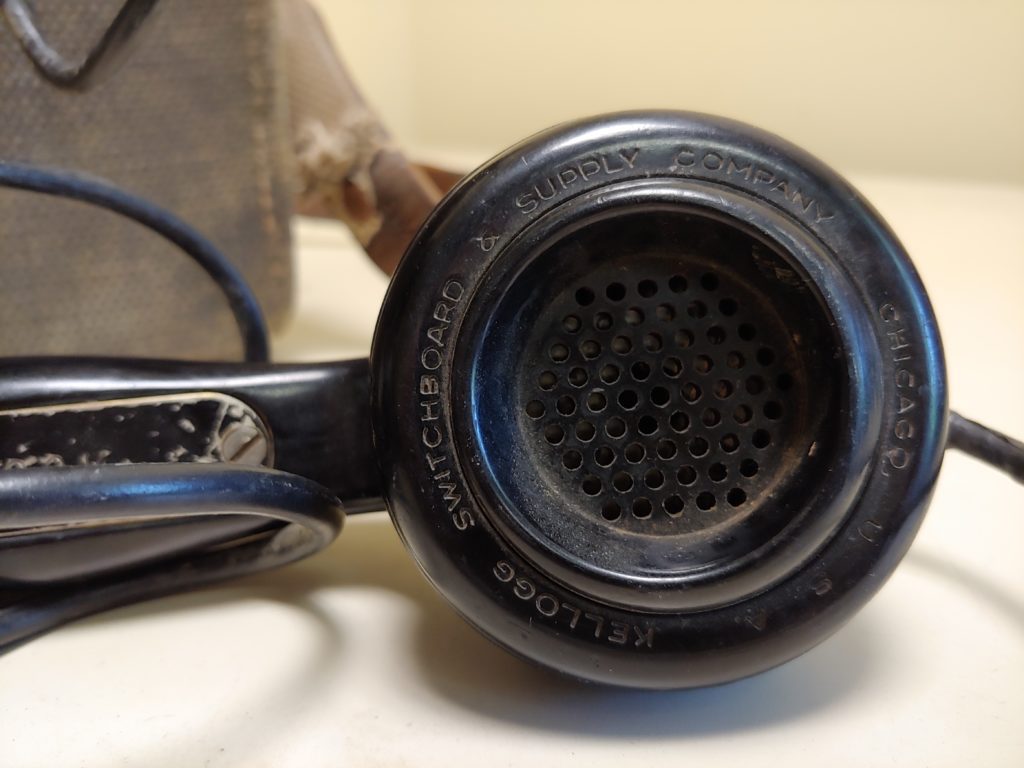
Along with Western Electric, which supplied the Bell System, Automatic Electric supplying General Telephone, and Stromberg-Carlson, also supplying the independent telephone markets, Kellogg shared in the business of providing the bulk of the nation’s telephone equipment until after World War II.
source wikipedia.
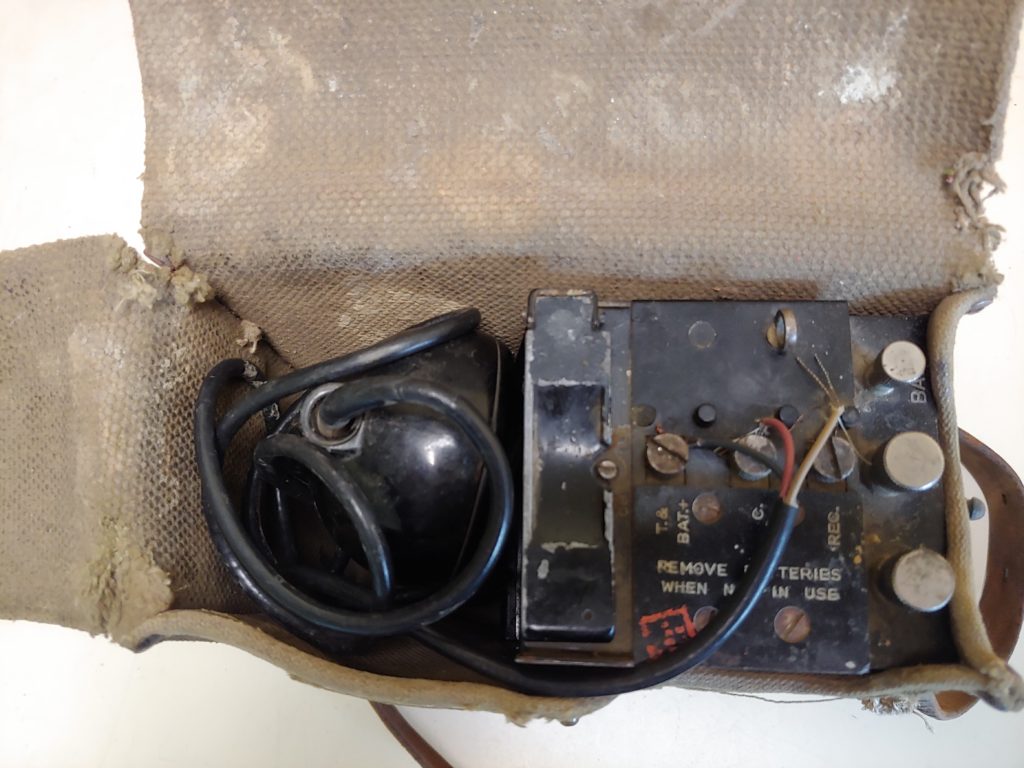
At the top of the phone, exposed when the cover is opened, there is a terminal block. All control switches and binding posts for wire are contained on the terminal block. The lever switch is curved and spring loaded so that it is depressed when the weight of the handset is rested on it (EE-8 is off line, switch open). The EE-8 comes on the line when the handset is lifted (switch closed).
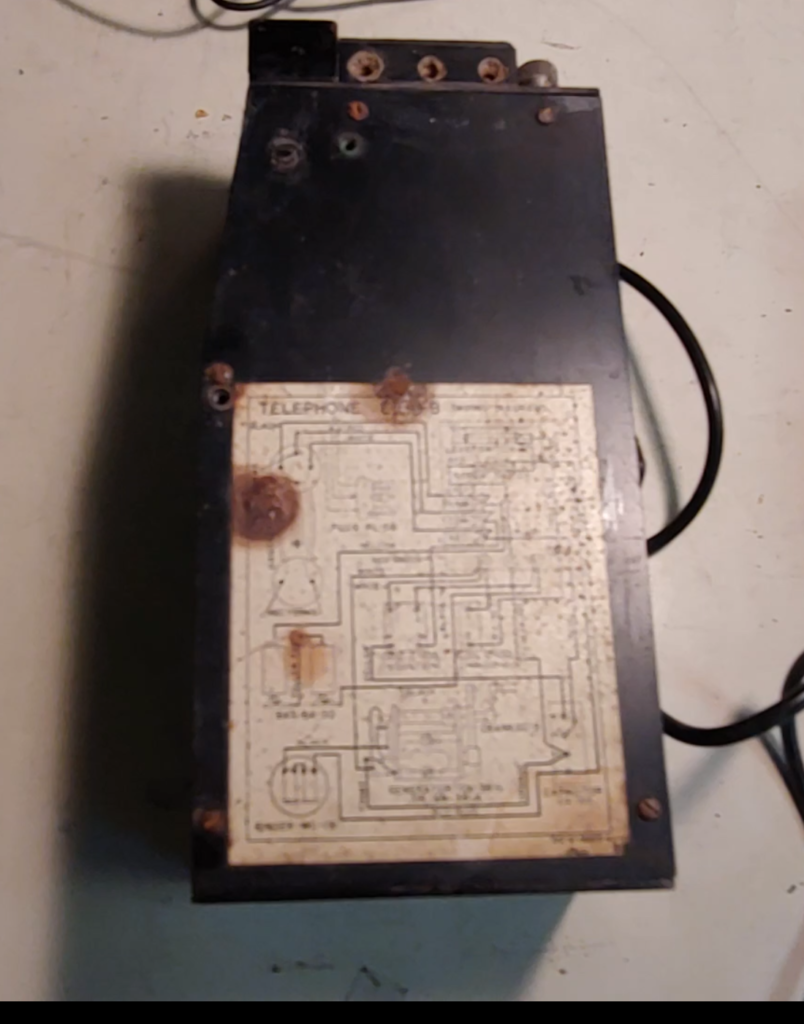
A 90-100 volt, 20 Hz hand-cranked ringing generator GN-38 is contained in the case of an EE-8 or EE-8A while the GN-38A or GN-38B is used with the EE-8B. The crank is operated from the side of the case. The TS-9-F Handset connects to the EE-8 or EE-8A and is stored in the case, in an open area accessible when the top cover is open. The EE-8B has similar handset TS-13-E. Two BA-30 1.5 volt D-cell batteries are installed in the battery compartment reached from the terminal block area at the top-inside of the case.
Content source olive-drab.com
All photo’s are the property of Digital Fourten LLC.
